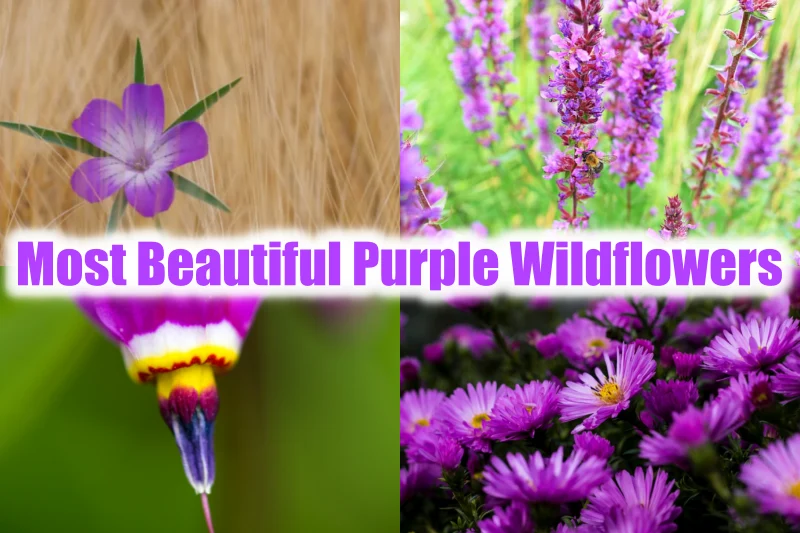Purple is the color of royalty, a color that symbolizes power and independence. While some perceive its overuse as arrogance, many people can’t help but be drawn to its warm embrace. If you like this beautiful color, your journey starts here.
Nature is the home to many known and unknown species. Even though people try to figure out how nature works, it shows that its complexity is far beyond what we can understand. It is also home to a wide array of eye-catching flora. Purple flowers are a great example of how beautiful nature is because each one is different and interesting.
This article is a list of the top 10 purple wildflowers, carefully ranked for those who want to learn more about the beautiful world of flowers. Join us on this journey as we uncover the secrets of nature one petal at a time.
Top 10 Most Beautiful Purple Wildflowers
1) Purple loosestrife
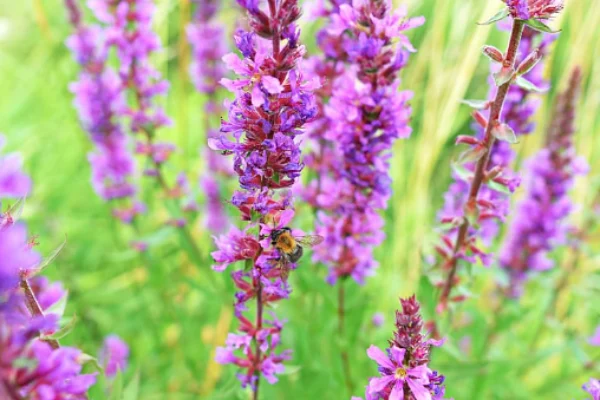
| Scientific Name | Lythrum salicaria |
| Geographic Origin | Europe, Asia, and Africa |
| Size | 1-2 meters |
| Identification | Reddish purple flowers with 6 petals and 12 stamens |
The stems are reddish-purple and square in cross-section, while the flowers have a bright purple hue.
Historians believe these flowers were named after Lysismachus, an army general and friend of Alexander the Great.
They form colonies of about 1.5 m in width with numerous erect stems growing from a single woody root.
These flowers are pollinated by long-tongued insects like bees and butterflies and are a staple diet of caterpillars of the engrailed moth (Ectropis crepuscularia)
2) New England aster
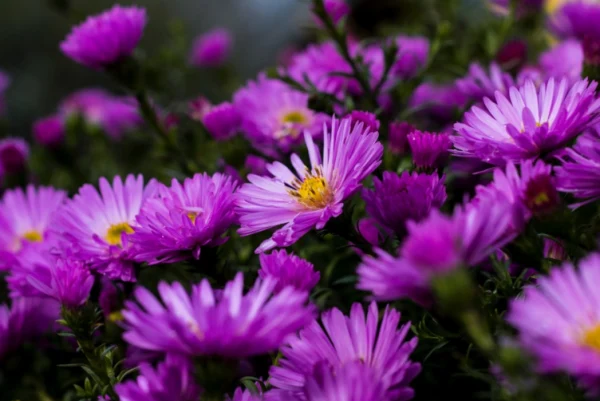
| Scientific Name | Symphyotrichum novae-angliae |
| Geographic Origin | Central and eastern North America |
| Size | 30-120 cm |
| Identification | Flowers grow in clumps on erect stems emerging from a single point. |
They are deep purple color flowers with up to 100 ray florets with numerous yellow disk florets.
The stems are hairy and mostly unbranched.
They are naturally found in a wide variety of open, mostly moist habitats, including meadows, prairies, marshes, fens, and sometimes even by the roadside or former agricultural lands.
Songbirds feed on their seeds during fall and winter.
Heavily visited by long-tongued insects like bumblebees and seldom by short-tongued species. Along with the copious amount of nectar, bees also collect pollen on their way out.
3) Clasping bellflower
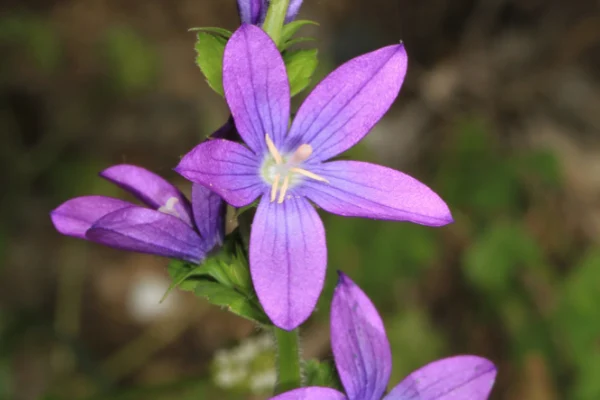
| Scientific Name | Triodanis perfoliata |
| Geographic Origin | North and South America, Canada, Argentina, China, Korea, and Australia. |
| Size | 10-46 cm |
| Identification | Hairy stem with only 1 flower emerging at one time. |
They are identified by their distinct bell-shaped, purple-blue flower, approximately 1.3 cm across.
These beautiful flowers bloom from May to August and attract a variety of long-tongued insects.
Their stem and leaves both contain a milky sap.
Bellflowers grow in open woods, grassy slopes, rocky outcrops, and mainly in poor, dry, sandy soil.
4) Purple Coneflowers
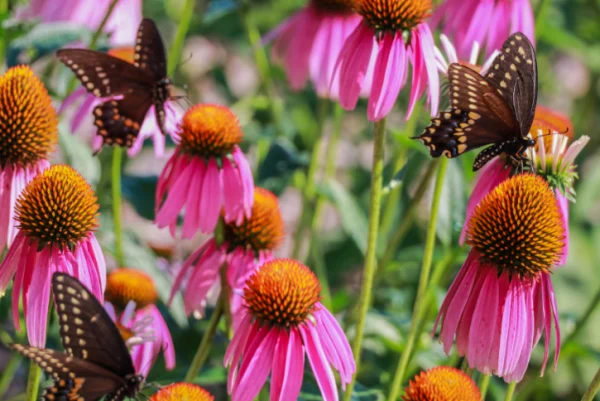
| Scientific Name | Echinacea purpurea ‘Maxima’ |
| Geographic Origin | Eastern and Central North America |
| Size | 140 cm |
| Identification | Has a spiny center showing the paleae |
The flowers are dark purple to pale pink, white or yellow with a spikey center and with orange to reddish-purple end.
Like the other members of the sunflower family, the flowering structure is a composite inflorescence, with purple florets arranged in the shape of a cone.
The common name “coneflower” comes from the characteristic center “cone” in the middle of the flower head.
The natural growth of these plants is restricted to North America, specifically along the east of the Rocky Mountains.
5) Scottish bluebell
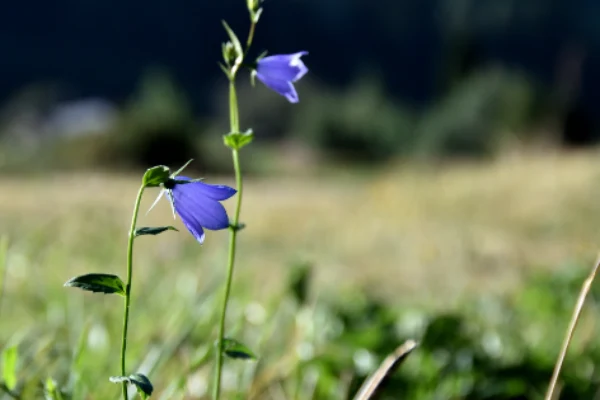
| Scientific Name | Campanula rotundifolia |
| Geographic Origin | Throughout the northern hemisphere |
| Size | 45 cm |
| Identification | Purple-blue, bell-shaped flowers |
The flowers usually have 4-6 pale to dark violet or purple petals fused into a bell shape.
The petal lobes are triangular and curved outwards.
When broken or injured at any point, Bluebell releases white latex.
The flowering period varies by location, flowering from July to November in the British Isles to flowering from May to August in Minnesota.
These flowers are pollinated by bees but are capable of self-pollinating.
6) Hairy vetch
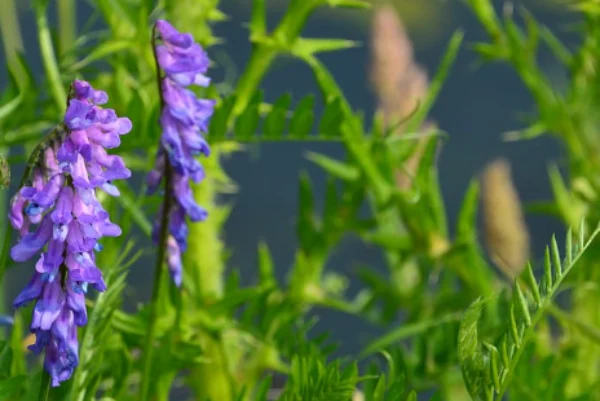
| Scientific Name | Vicia villosa |
| Geographic Origin | Europe and western Asia |
| Size | 4-6 feet |
| Identification | Hairy stems with multiple flowers growing on the stalk. |
Invasive plant with bright purple flowers borne on the stalk.
Used by organic growers in the US as a winter cover crop, as it is both cold-tolerant and can fix as much as 200 lb/acre of atmospheric nitrogen.
Vetch can be classified as an agricultural crop or weed depending on the season it grows in.
7) Hookedspur violet
| Scientific Name | Viola adunca |
| Geographic Origin | Meadows and forests of western North America, Canada, and the United States |
| Size | 7.5 cm |
| Identification | The lower petals have white bases while the upper two petals have hooked spurs at their tip |
Small, hairy plant with exactly 5 petals and an intensive rhizome system.
It is a perennial flower blooming in the late spring.
Hookedspur violet is the larval host plant for Myrtle’s silverspot (a medium-sized butterfly).
Currently listed as endangered in Massachusetts and Connecticut.
8) Pretty shooting star
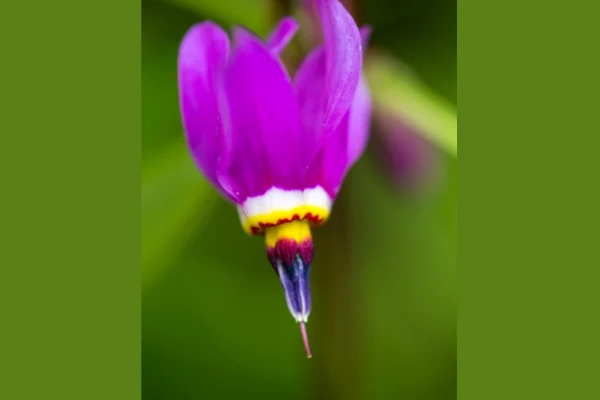
| Scientific Name | Primula pauciflora |
| Geographic Origin | North America and Mexico |
| Size | 5-40 cm |
| Identification | Generally hairless stem with inflorescence made up of 2-15 flowers. |
The flower has 9-14 mm long petals, magenta to purple.
The corolla is usually purple, rarely white with a short yellowish tube at the base.
The plant flowers between April and August.
Pretty shooting stars are cold-tolerant but prefer a sheltered location with partial or full shade with neutral or acidic soil with good drainage.
9) Corncockle
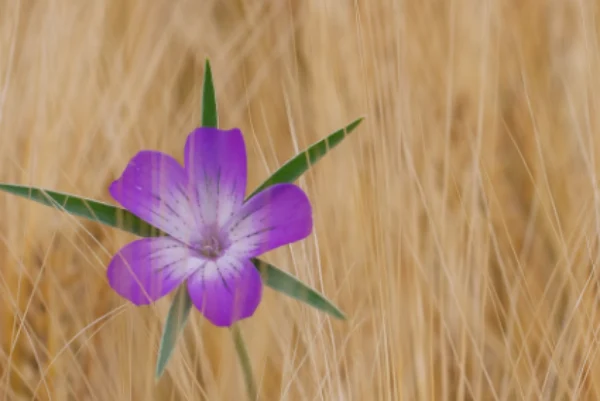
| Scientific Name | Agrostemma githago |
| Geographic Origin | The United States, parts of Canada, Australia, and New Zealand. |
| Size | 100-115 cm |
| Identification | The sepals are longer and narrower than the petals |
These scentless, deep pink to purple flowers are produced in the summer months.
Each petal bears two or three discontinuous black lines, making them stand out.
Although used in folk medicine, all parts of this plant are poisonous as it contains githagin and agrostemmic acid.
10) False foxglove
| Scientific Name | Agalinis tenuifolia |
| Geographic Origin | Eastern and Southwestern United States and Canada |
| Size | 20-60 cm |
| Identification | Small bilaterally symmetrical purple flower |
These purple flowers grow on 10-20 mm long pedicels.
Each flower is bilaterally symmetrical with five 10-15 mm long petals fused into a corolla tube and four stamens.
Their growing conditions change according to the location they are grown in.
Conclusion:
Wildflowers grow naturally without human intervention. While most of them are poisonous or toxic to humans, some are also used by indigenous tribes for their lesser-studied medicinal values. Here we have tried to provide a comprehensive list of the top 10 purple wildflowers ranked for their different properties.
Also Read:

Hi everyone, my name is Shawna, and I’ve always been fascinated by the fascinating diversity of flora and fauna that our nature has in it. I am currently studying biotechnology and am particularly interested in animal biotechnology, delving into the intricate processes that define their true nature and uniqueness.
